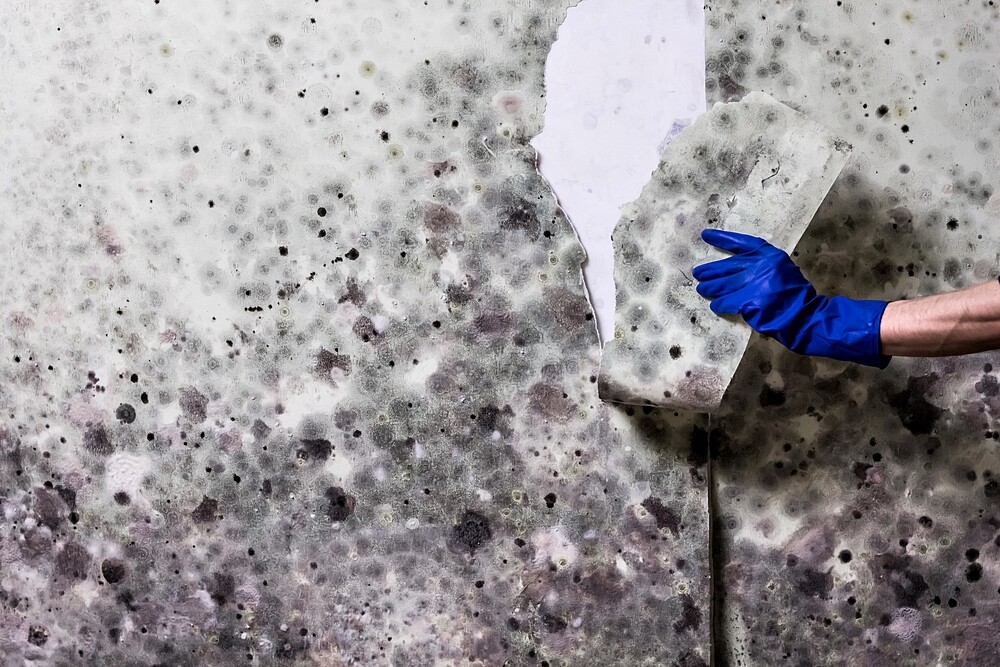Attention, dangerous spotted devil! The dark spots are not only unattractive to look at, but also harmful to health. With these home remedies you can remove mould stains.
Just like mould, mildew stains are also caused by moisture. To avoid them in the future, you should ventilate regularly and correctly. Mould stains are not only unsightly to look at. Depending on their intensity, they can also irritate the respiratory tract and even trigger allergies. So we should get rid of them as soon as possible! Simple home remedies often help to remove the mould stains.
Removing mould stains: From clothing and textiles
- Vinegar: Due to its aggressive acidity, vinegar is an effective household remedy against mildew and mildew stains. Soak the affected areas in a bowl of conventional white household vinegar for at least one hour. Alternatively, you can also use vinegar essence diluted with water. In this case, three parts water to one part vinegar essence. Then rinse the garment under running water and put it in the washing machine.
- Buttermilk: With buttermilk you can gently remove foxing stains. Especially with sensitive fabrics you should first try this household remedy. Soak the clothes in it for two to three days and then clean them with clear water. Then simply wash as usual.
- Boil it: This method is of course only suitable for light, robust fabrics that are not affected by high temperatures. Place the garment in boiling water for about 30 minutes and add a detergent containing bleach. The heat will make the mould grow. Then rinse with clean water.
- Washing soda: You can also remove mould stains with washing soda. Put the powder in a bowl with water and a dash of detergent and soak the fabric in it for a good hour.
- Stain salt: A similar procedure can be performed with stain salt. Dissolve the salt in a bowl of lukewarm water. Follow the instructions for use and choose the amount for stubborn stains. Add some more detergent and leave the affected areas to soak for about five hours. Then clean them under running water and put them in the washing machine.
- Chlorine bleach: The only time you should consider bleach is when everything else has proven to be ineffective. Chlorine bleaches can irritate the skin and respiratory tract, and they also pollute the environment. They also cause more damage to colourful and sensitive materials than they use. Test beforehand on a hidden spot to see if the fabric can tolerate the chlorine cleaner. You should wear gloves when doing so. Soak the mould stains for about five hours in a water bath with a little chlorine bleach. Follow the instructions for use of the product. Then rinse the fabric with water and machine wash it to remove any residual chlorine. As an alternative to chlorine cleaner, you can also use Javel water to remove mould stains. This is strong against stains and mould and not as aggressive.
Removing mould stains: From the wall
- Vinegar: Even on walls you can remove ugly mildew stains with vinegar or correspondingly diluted essence. Moisten a cotton cloth with the liquid, wring it out a little and rub the affected area with it until the stains have disappeared.
- Spiritus: Instead of vinegar, you can also use spirit against mould stains. Then air the area thoroughly.
Removing mould stains: From the pram
Mould stains in the pram could be harmful to the child’s health, so we have to act quickly. Besides vinegar water, you can try Javel water. Put the cover in the washing machine, mix 100 ml of the liquid with 300 ml of water, put the mixture directly into the drum and choose a wash cycle of 30 degrees. Do not add any additional detergent! Only after cleaning, let it run through again with regular washing powder.

